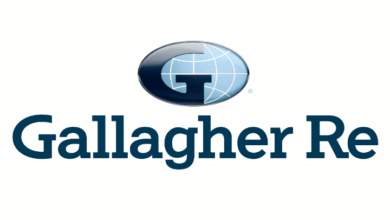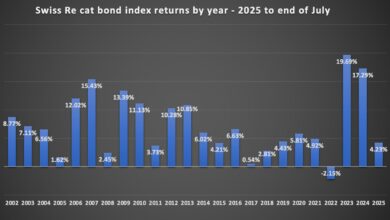Top Insurance Agency Automation Tools to Boost Productivity

Key Takeaways
- Insurance agents spend over 60% of their time on manual tasks that can be automated to save time and grow revenue.
- Modern CRM systems centralize lead, client, and policy management, with reminders, analytics, and integration.
- Automated lead nurturing and communication tools ensure 24/7 engagement and reduce client drop-offs.
- Document processing automation reduces errors, shortens turnaround times, and improves compliance tracking.
- Implementing one automation system at a time leads to higher adoption and smoother operations agency-wide.
Running an insurance agency in today’s market feels like spinning plates while juggling flaming torches. Between managing endless paperwork, chasing down leads, keeping clients happy, and staying compliant with ever-changing regulations, there simply aren’t enough hours in the day. Sound familiar?
Here’s the thing – while you can’t add more hours to your day, you can absolutely make the hours you have work harder for you. The secret weapon that’s transforming how successful agents operate? Smart automation tools that handle the routine stuff so you can focus on what really drives your business forward.

The Real Cost of Manual Processes
Before we dive into solutions, let’s talk about what sticking with manual processes is actually costing you. Most agents don’t realize they’re spending roughly 60% of their time on administrative tasks that could be automated. That’s three out of every five working hours spent on paperwork instead of selling policies or building relationships.
Think about your typical day. How much time do you spend manually entering data from applications? Following up on quotes that haven’t been responded to? Sending renewal reminders? Tracking down missing documents? All of these tasks are necessary, but they don’t require your expertise as a licensed professional.
The opportunity cost is staggering. Every hour spent on routine tasks is an hour not spent prospecting, cross-selling existing clients, or developing referral relationships. For the average agent writing $500,000 in premium annually, improving efficiency by just 20% through automation can translate to an additional $100,000 in revenue without working a single extra hour. Automation tools like Zapier or Kissflow can streamline routine workflows—learn how agencies are elevating operations with digital tools here.

Start tracking your daily activities for one week to identify which tasks consume the most time – this data becomes your automation priority list.
Customer Relationship Management: Your Foundation
The backbone of any productive insurance operation is a robust Customer Relationship Management system that goes beyond simple contact storage. Modern CRM platforms designed specifically for insurance agents automate much of the client lifecycle management that traditionally consumed massive amounts of time.
Modern CRMs designed specifically for insurance agents are game-changing. See our curated review of the best insurance CRM solutions for 2025 including predictive lead scoring and automation workflows.
These systems automatically track where each prospect stands in your sales pipeline, send follow-up reminders at optimal intervals, and flag accounts that need attention. When a client calls with a question about their policy, the system instantly displays their complete history, current coverage, and any pending issues. No more scrambling through files or asking clients to repeat information you should already have.
Key benefits of modern insurance CRMs include:
- Pipeline visibility – Track every prospect from initial contact to policy binding
- Automated follow-ups – Never let a hot lead go cold due to forgotten callbacks
- Complete client profiles – Access full interaction history in seconds
- Task management – Automated reminders for renewals, reviews, and check-ins
- Integration capabilities – Connect with carriers, rating engines, and communication tools
The real power comes from integration capabilities. Your CRM should connect seamlessly with carrier systems, rating engines, and communication tools. This means when you update information in one place, it automatically updates everywhere else. Policy changes made in your agency management system instantly reflect in your CRM, triggering appropriate workflow actions and client communications.
Advanced CRM systems also provide predictive analytics that identify your best prospects and most profitable clients. They can automatically score leads based on conversion probability and suggest optimal contact timing. This intelligence helps you focus your limited time on the opportunities most likely to close.
Our Problem: Too Many Leads, Not Enough Agents
 Grow Your Agency Faster with Agency Height Insurance Directory
Grow Your Agency Faster with Agency Height Insurance Directory
Your email has been registered. Redirecting…
Join our network of successful agents and start getting quality leads
Lead Management That Never Sleeps
Lead management automation transforms how you capture, nurture, and convert prospects. Instead of hoping leads remember to call you back or relying on your memory to follow up, automated systems work around the clock to move prospects through your sales funnel.
Modern lead management tools capture inquiries from your website, social media, and referral partners, automatically routing them to the appropriate team member and triggering immediate response sequences. When someone requests a quote online at 10 PM on a Sunday, they receive an acknowledgment within minutes and relevant information to keep them engaged until you can provide a personal response.
Essential lead management features include:
- Instant lead capture – Automatically collect and route web inquiries 24/7
- Response automation – Send immediate acknowledgments and follow-up sequences
- Lead scoring – Rank prospects by conversion probability
- Source tracking – Identify which marketing channels generate the best leads
- Nurture campaigns – Keep prospects engaged with valuable content over time
The nurturing sequences are particularly powerful for property and casualty insurance, where purchase decisions often take weeks or months. Automated email sequences deliver valuable content about coverage options, claims processes, and risk management tips, positioning you as a trusted advisor rather than just another salesperson pushing policies.
Geographic and demographic targeting capabilities ensure prospects receive relevant information. Homeowners in hurricane-prone areas receive different content than those in earthquake zones. Business owners get information about commercial coverage while individuals learn about personal lines options.

Set up separate email sequences for different insurance types – auto insurance buyers have different concerns than homeowners or business owners.
Communication Automation That Builds Relationships
Effective communication automation doesn’t replace personal interaction – it enhances it by ensuring consistent, timely contact with every client and prospect in your database. The key is implementing systems that feel personal and valuable rather than robotic and sales-focused.
Automated birthday and anniversary messages strengthen client relationships without requiring manual calendar management. Policy renewal reminders sent at strategic intervals improve retention rates while giving clients time to ask questions or make changes. Claims anniversary check-ins demonstrate ongoing care and often uncover additional coverage needs.
The most sophisticated communication automation platforms integrate with your phone system and email, creating detailed interaction logs that help you prepare for every conversation. Before calling a client, you can quickly review their recent inquiries, policy changes, and communication preferences.
Smart communication automation delivers:
- Personalized messaging – Customize content based on client demographics and coverage
- Multi-channel outreach – Reach clients via email, text, phone, or social media
- Timing optimization – Send messages when clients are most likely to respond
- Response tracking – Monitor open rates, click-through rates, and engagement levels
- Compliance management – Ensure all communications meet regulatory requirements
Multi-channel communication capabilities ensure you reach clients through their preferred methods. Some clients prefer email, others respond better to text messages, and many appreciate old-fashioned phone calls. Automation systems can test different approaches and optimize communication timing and channels for each individual client.
Document Management and Processing
Paper-based document management is not just inefficient – it’s a competitive disadvantage. Automated document processing systems capture, organize, and distribute paperwork without human intervention, dramatically reducing processing time and virtually eliminating filing errors.
Optical Character Recognition technology automatically extracts data from applications, supporting documents, and carrier communications, populating your agency management system without manual data entry. This eliminates transcription errors while freeing up staff time for higher-value activities.
Key document automation capabilities:
- OCR processing – Extract data from PDFs and scanned documents automatically
- Digital signatures – Enable clients to sign documents electronically from any device
- Auto-filing – Organize documents in appropriate client folders without manual sorting
- Version control – Track document changes and maintain audit trails
- Compliance tracking – Generate required disclosures and maintain regulatory documentation
Digital signature platforms streamline policy delivery and changes. Clients can review and sign documents electronically from any device, and completed paperwork automatically files in the appropriate client folders. No more printing, mailing, waiting for signatures, and manually filing returned documents.
Compliance documentation becomes much simpler when systems automatically generate and store required disclosures, track acknowledgment receipts, and maintain audit trails. During examinations or legal proceedings, you can instantly produce complete documentation rather than searching through physical files.
Policy Management and Renewals
Policy management automation addresses one of the most time-intensive aspects of agency operations. Rather than manually tracking renewal dates, coverage changes, and payment schedules, automated systems monitor every policy in your book of business and trigger appropriate actions.
Renewal processing begins months before expiration dates, with systems automatically requesting updated information from clients, gathering fresh quotes from carriers, and preparing renewal presentations. Clients receive advance notices with plenty of time to review options and make changes.
Mid-term policy changes become much more efficient when systems automatically calculate pro-rated premiums, generate change documents, and update all relevant records. What once required multiple phone calls and manual calculations now happens with a few clicks.
Payment processing automation reduces administrative burden while improving cash flow. Automated payment reminders reduce late payments, while integrated payment processing allows clients to handle transactions online. Failed payment notifications trigger immediate follow-up, preventing unexpected policy cancellations.
An agency management system is essential for automating renewals, integrations, and document workflows—get the full guide here.
Marketing Automation for Consistent Growth
Successful insurance agents understand that consistent marketing drives long-term growth, but few have the time to maintain regular marketing activities alongside their other responsibilities. Marketing automation solves this challenge by maintaining consistent prospect and client engagement without constant manual effort.
Email marketing sequences nurture prospects with valuable content about insurance topics, financial planning, and risk management. Rather than sending generic newsletters, sophisticated systems deliver personalized content based on client demographics, coverage types, and interaction history.
Social media automation maintains your online presence across multiple platforms, sharing relevant content and engaging with comments and messages. While automated posting keeps your profiles active, the systems also alert you to opportunities requiring personal response.
Referral programs become much more effective with automation support. Systems track referral sources, automatically thank referral partners, and follow up on referral opportunities. Happy clients receive periodic invitations to refer friends and family, complete with easy sharing tools.
Analytics and Performance Tracking
The most powerful automation tools provide detailed analytics that help you understand what’s working and what needs improvement. Rather than guessing about the effectiveness of your processes, you get concrete data about conversion rates, client satisfaction, and operational efficiency.
Pipeline analytics show exactly where prospects are getting stuck in your sales process, allowing you to address bottlenecks and improve conversion rates. Client retention reports identify patterns that might indicate service issues or coverage gaps.
Financial performance tracking connects operational metrics to business results. You can see which marketing channels produce the most profitable clients, which types of policies have the highest retention rates, and which processes consume the most time relative to their results.
ROI calculations for your automation investments help justify technology expenses and guide future investments. When you can demonstrate that automation tools generate measurable improvements in efficiency and revenue, it becomes easier to obtain buy-in for additional improvements.
Our Problem: Too Many Leads, Not Enough Agents
 Grow Your Agency Faster with Agency Height Insurance Directory
Grow Your Agency Faster with Agency Height Insurance Directory
Your email has been registered. Redirecting…
Join our network of successful agents and start getting quality leads
Implementation Strategy for Maximum Impact
Successfully implementing automation tools requires a strategic approach that minimizes disruption while maximizing benefits. Start by identifying your biggest time drains and most error-prone processes. These areas typically offer the quickest returns on automation investments.
Begin with one system at a time rather than attempting to automate everything simultaneously. Most agencies find that starting with either CRM or communication automation provides a solid foundation for additional tools. Once your team becomes comfortable with the first system, you can gradually add complementary tools.
Staff training is crucial for successful automation adoption. Team members need to understand not just how to use the tools, but why the changes benefit both the agency and clients. Resistance to change often stems from fear of technology or concerns about job security. Address these concerns directly by emphasizing how automation handles routine tasks so staff can focus on more interesting and valuable work.
Data migration from existing systems requires careful planning to avoid losing important information. Most automation vendors provide migration assistance, but the process goes more smoothly when you clean up your existing data first. Remove duplicate contacts, standardize naming conventions, and verify contact information before moving to new systems.
Measuring Success and Continuous Improvement
Automation implementation is not a one-time project but an ongoing process of refinement and optimization. Establish baseline measurements for key metrics before implementing new tools, then track improvements over time.
Time savings measurements should account for both direct time reductions and improved accuracy that eliminates rework. If automated data entry saves two hours per day but also eliminates errors that previously required an additional hour of corrections, the total benefit is three hours daily.
Client satisfaction improvements often show up in retention rates, referral frequency, and survey responses. Clients appreciate faster response times, fewer errors, and more personalized service – all natural results of effective automation.
Revenue impact typically appears gradually as improved efficiency allows you to handle more clients and identify more cross-selling opportunities. Track new client acquisition rates, policy counts per client, and average client value to measure business growth attributable to automation improvements.
The Future of Insurance Agency Operations
The insurance industry is experiencing rapid technological advancement, with artificial intelligence, machine learning, and predictive analytics becoming increasingly accessible to agencies of all sizes. Agents who embrace automation now position themselves to take advantage of these emerging technologies.
Smart automation tools are no longer luxury items for large agencies – they’re essential competitive tools for any agent serious about growth and profitability. The question isn’t whether to implement automation, but rather which tools to implement first and how quickly you can realize their benefits.
The agents who thrive in tomorrow’s market will be those who use technology to amplify their human capabilities rather than replace them. Automation handles the routine work so you can focus on building relationships, solving complex problems, and growing your business.
Start small, think big, and remember that every hour automation saves is another hour you can spend on activities that truly require your expertise and experience. Your clients will appreciate the improved service, your staff will enjoy more engaging work, and your bottom line will reflect the improved efficiency.
The tools are available, the benefits are proven, and the competitive advantage is real. The only question left is: what’s stopping you from getting started?
Frequently Asked Questions
-
What is insurance agency automation?
It’s the use of digital tools to streamline repetitive tasks like data entry, lead follow-ups, and policy renewals.
-
Which automation tool should I start with?
Start with a CRM that integrates with your quoting and email systems—it lays the foundation for further automation.
-
Can automation help me get more leads?
Yes, by automating lead capture, scoring, and follow-up, you convert more prospects without extra manual effort.
-
Is automation affordable for small agencies?
Yes, many tools offer scalable pricing and bring ROI by saving time and boosting conversions.
-
Will automation replace my staff?
No—it supports your team by removing routine tasks so they can focus on sales and service.



